We have two types of foxes here in North Texas—the Red Fox and the Gray Fox. Here is what Wikipedia has to say about both of them:
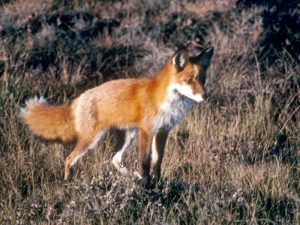
Red Fox
The red fox (Vulpes vulpes) is the largest of the true foxes and one of the most widely distributed members of the order Carnivora, being present across the entire Northern Hemisphere from the Arctic Circle to North Africa, North America and Eurasia. It is listed as least concern by the IUCN.
Red foxes are usually together in pairs or small groups consisting of families, such as a mated pair and their young, or a male with several females having kinship ties. The young of the mated pair remain with their parents to assist in caring for new kits. The species primarily feeds on small rodents, though it may also target rabbits, game birds, reptiles, invertebrates and young ungulates. Fruit and vegetable matter is also eaten sometimes. Although the red fox tends to kill smaller predators, including other fox species, it is vulnerable to attack from larger predators, such as wolves, coyotes, golden jackals and medium- and large-sized felines.
The species has a long history of association with humans, having been extensively hunted as a pest and furbearer for many centuries, as well as being represented in human folklore and mythology. Because of its widespread distribution and large population, the red fox is one of the most important furbearing animals harvested for the fur trade. Too small to pose a threat to humans, it has extensively benefited from the presence of human habitation, and has successfully colonised many suburban and urban areas.
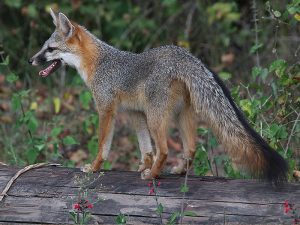
Gray Fox
The gray fox (Urocyon cinereoargenteus), or grey fox, is a omnivorous mammal of the family Canidae ranging throughout most of the southern half of North America from southern Canada to the northern part of South America (Venezuela and Colombia). No other canid’s natural range spans both North and South America and it is the only American canid that can climb trees. This species and its only congener, the diminutive Channel Island fox (Urocyon littoralis), are the only living members of the genus Urocyon, which is considered to be the most basal of the living canids. Though it was once the most common fox in the eastern United States, and still is found there, human advancement and deforestation allowed the red fox to become more dominant. The Pacific States still have the gray fox as a dominant. Its specific epithet cinereoargenteus means “ashen silver”.
The gray fox is monogamous. The breeding season of the gray fox varies geographically; in Michigan, the gray fox mates in early March, in Alabama, breeding peaks occur in February. The gestation period lasts approximately 53 days. Litter size ranges from 1 to 7. Kits begin to hunt with their parents at the age of 3 months. By the time that they are four months old, the kits will have developed their permanent dentition and can now easily forage on their own. The family group remains together until the autumn, when the young reach sexual maturity, then they disperse.
The gray fox is an omnivorous, solitary hunter. It frequently preys on the eastern cottontail (Sylvilagus floridanus) in the eastern U.S., though it will readily catch voles, shrews, and birds. In California, the gray fox primarily eats rodents, followed by lagomorphs, e.g. jackrabbit, brush rabbit, etc.[18] In some parts of the Western United States (such as in the Zion National Park in Utah), the gray fox is primarily insectivorous and herbivorous. Fruit is an important component of the diet of the gray fox and they seek whatever fruits are readily available, generally eating more vegetable matter than does the red fox (Vulpes vulpes).
Here in the Dallas/Fort Worth metroplex there are only a few, very localized, Red Fox enclaves. It is the Gray Fox that is by far and away the most common, and it will be the Gray Fox that is the subject of this article.
Gray Foxes can be found all around the metroplex. They are very adaptable and do very well in urban and suburban environments. In DFW we have recorded observations of the Gray Foxes in a variety of places, ranging from neighborhood parks, to residential backyards, to downtown Dallas, to a college football stadium. These clever omnivores thrive on small mammals, birds, fruits, and insects—all of which are plentiful in our towns and cities.

Gray Foxes also frequently den in and around human-built structures. Foxes like our constructs for the same reasons we do… they make good, reliable, and safe places to live. All of these factors combine to allow our urban Gray Foxes to thrive along side us.
But, Gray Foxes, just like most other urban wildlife, sometimes get into jams and can use some help. In our cities and towns it is usually conflict with the needs of people that put the foxes in jeopardy. Often it is construction or automobile traffic or unethical trapping that can leave foxes injured or orphaned. When these kinds of tragedies happen, human intervention can make the difference between life and death.
But, for may years it was against the law to rehab wild foxes in Texas. Concerns about the spread of rabies was the prime motivation for this restriction. Over time—as the need for rehab became more apparent, and the concerns about spreading rabies diminished,—the State re-evaluated, and the licensed rehabbing of Foxes again became legal.
Now if fox in need is discovered—injured or orphaned—it can be taken to a licensed rehabber like Kari Waddle for help. Kari has an extensive background in working with wildlife. She is currently completing a degree in Wildlife, Sustainability, and Ecosystem Sciences at Tarleton State University in San Marcos. She has been involved in wildlife rehabilitation for over ten years, but her experience working with wildlife goes much deeper than that.
When Kari’s family moved Thailand in her teen years, she had the opportunity to join a program dedicated to the ecology of Thailand. She traveled to various provinces working in sensitive mangrove habitats, where she was able to participate in things like coastal programs to re-introduce sea turtles to the beaches of Thailand, fruit bat population studies, and gibbon rehabilitation efforts.
Later, when Kari’s family moved to the UK, she found a job working at the London Zoo. That led to a job with the Dallas Zoo and later Dallas Animals services when she came back home to Texas. During that time, Kari worked with several wildlife facilities in varied roles ranging from lead keeper, to volunteer/intern coordinator and social media outreach, to program development, and deputy director.
It was also during this period of her life that Kari began to explore wildlife rehabilitation. She signed up for the requisite classes and soon had her state permits.
Kari prefers to work with animals that people tend to misunderstand. She feels these animals often need the most help. The main focus of Kari’s rehabilitation efforts over the years have centered around bobcats and foxes, but she has worked with raccoons and bats. Kari knows there is something to find appealing and interesting with every living creature. Her hope is that her work will support education efforts that will help people to see these animals in a different light.
This summer Kari returned to the challenge of rehabbing Gray Foxes. And challenged she was. A total of eight baby foxes in need came her way over the spring and early summer. She was going to have her hands full with these active and intelligent creatures.

The first pair of kits to come to Kari were the siblings Olive and Indigo. Kari became aware of these two young foxes in mid-March when a friend directed her to a discussion thread on Facebook about two baby mystery animals. Evidently this brother and sister pair were discovered by a family dog who “rescued” them by bringing them into the house. At 2 to 3 weeks of age, these kits were in good condition, but very young. They were going to need some help. When the den site could not be located, Kari took the two kits into her care.
Next, there was Niri, a 3 to 4 week old female that came to Kari with very little background information. Fortunately, Niri’s condition was good, and so was her prognosis.
In early May, Kari took in Mali, another 3 to 4 week old female. Mali came to Kari through the Humane Society of North Texas with an unknown back story. She was placed with Niri for support.
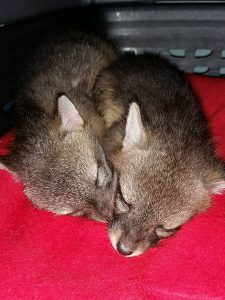
In mid-May a male kit, named Shark, joined the group. There was some speculation that he may be a sibling of Niri because the were found in virtually the same location. Shark was believed to be about 4 weeks old. His health was judged to be good, but he appeared to be suffering from stress related to his temporary housing at the animal shelter. Kari went right to work to make Shark feel at home.
Next, little Wolverine came to Kari. He was turned over to Kari by the people who found him, but the details of his back story are not quite clear. Wolverine’s age was estimated to be approximately 5 weeks. Kari judged him to be small for his age and developmentally slow. Wolverine would have struggles ahead. Kari would have to monitor his progress carefully.
There are many reasons why a baby fox can become distressed. Time is critical for orphaned wildlife. It is imperative that wild babies in need find their way to an experienced and licensed rehabber as soon as possible, so that their special care and nutritional needs can be met. Inadequate nutrition can result in renal failure or metabolic bone disease. Improper feeding can result in pulmonary aspiration. It doesn’t take long for the lack of proper care to have a devastating affect on infant animals.
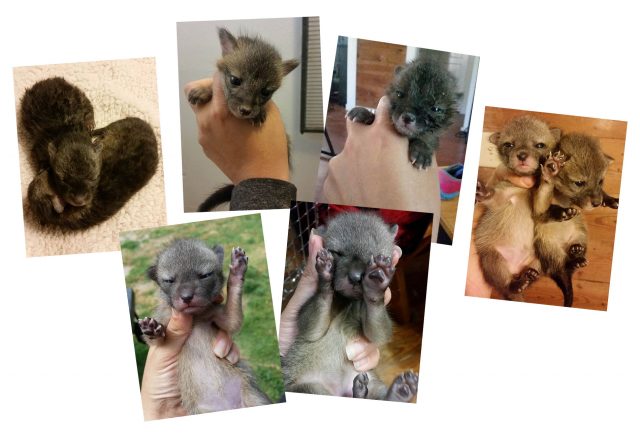
In late May, Kari took possession of another pair of babies—Wobbles and Xylan. These two sibling foxes were estimated to be around 7 weeks old. They had been orphaned when an Animals Services Officer trapped and relocated their mother. Reportedly, two more kits in the litter remained unrecovered. The trapping of urban foxes is generally unnecessary, and can have tragic consequences.
These two kits at first appeared to be in good condition, but Wobbles soon began displaying concerning symptoms. This young fox seemed to have trouble with his motor function. His balance was affected, and he appeared to develop a degree of paralysis in his hind quarters. The hope was that this was only stress related. Kari responded with extra care and observation, and fortunately Wobble’s condition soon began to resolve. It wasn’t long before he was healthy enough to join the others in their outdoor enclosures.
With the exception of Wolverine, the other seven foxes continued to do well and thrive. They grew larger and stronger everyday. Kari saw to their special needs, while carefully ensuring that the young wild animals did not become habituated to human contact. Maintaining a healthy fear of humans would be critical to the foxes’ success after release. Remaining wary of people will require the foxes to develop the requisite independence, and will also help safeguard them from those who view foxes as vermin.
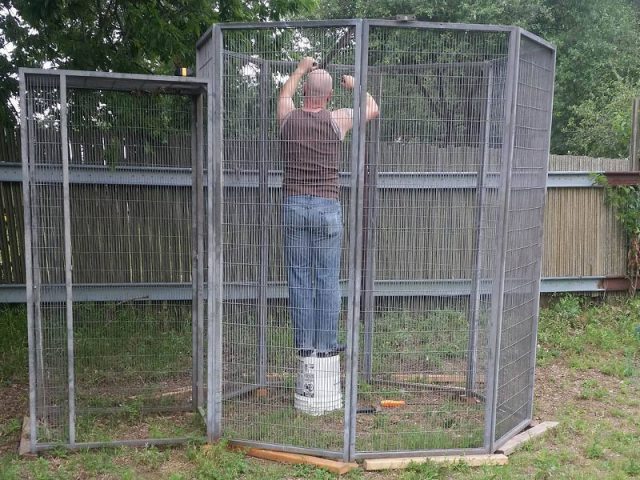
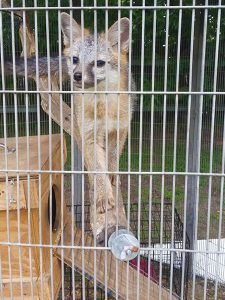
For Wolverine the struggles continued, in spite of Kari’s best efforts. Rehabbers do their best with limited resources, but they don’t win them all. Wolverine was an outlier from the start. He was always too small and too hungry. Something was obviously not quite right about this little one, but it was not clear exactly what. One morning, after a particularly vigorous food hoarding episode, Wolverine was found dead in his cage. Whatever was wrong with this feisty young male had finally caught up with him.
For the others, the date for their return to the wild was rapidly approaching. Arrangements were made to release these foxes on a ranch in Wise County. The habitat there would be perfect. Rolling hills covered in cedars and oaks, with creeks and cattle tanks for water. This environment would give the foxes an excellent chance for survival. They would do very well there.
The plan was to release all seven of the foxes on the same day, but on the night before our plans were disrupted. Two of the foxes—Mali and Niri—appeared to become ill. They were isolated, and plans were made to release them at a later date. We were still a go with the other five.
We met Kari and her friends for the first time at the Wise County ranch on a warm October afternoon. The late day sun cast a warm glow on the landscape that would compliment the foxes fur color perfectly. If the foxes cooperated, the pictures promised to be beautiful.
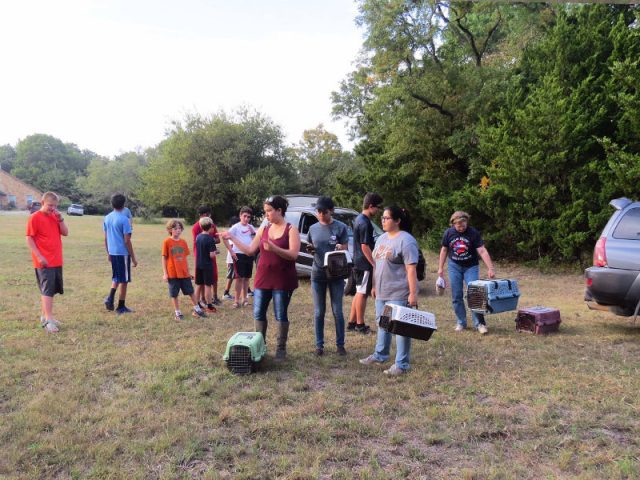
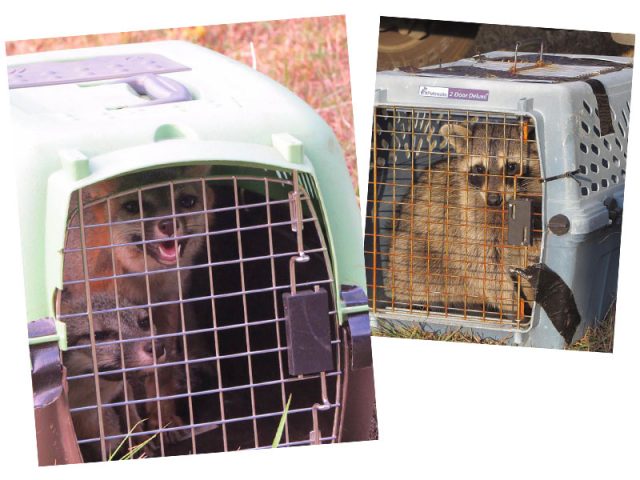
Shark, Wobbles, and Xylan were the first to be released. The crate doors were opened and away they went. Like arrows shot from a bow, the foxes disappeared into the woods before most of us had a chance to blink.
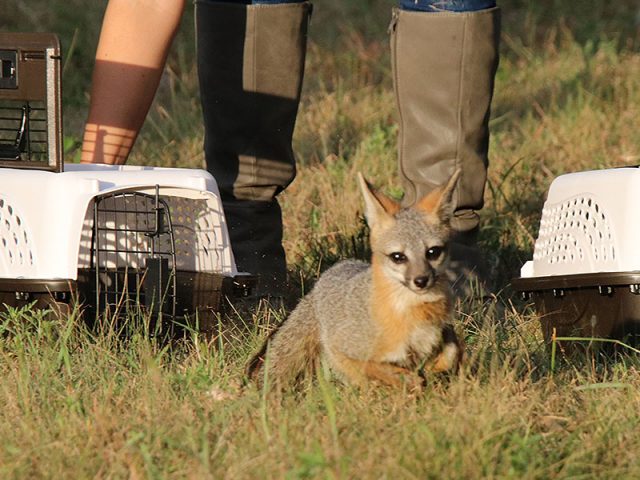
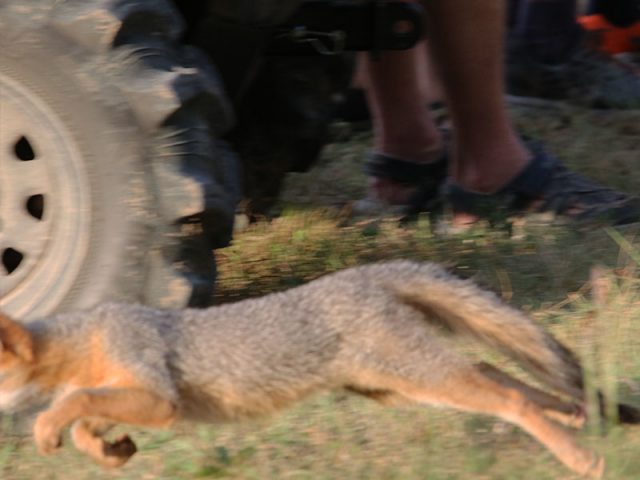
A pair of Raccoons were next to be released. Raccoons keep their own schedule and have a bit of swagger. These two were not afraid, and they felt free to explore the immediate area extensively while we prepared to release the last two foxes.
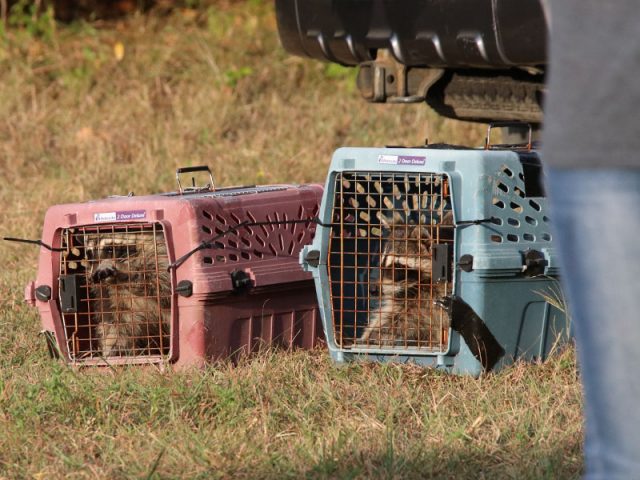

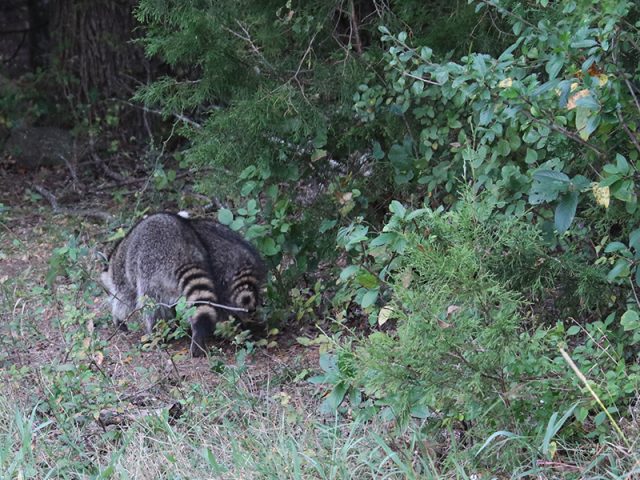

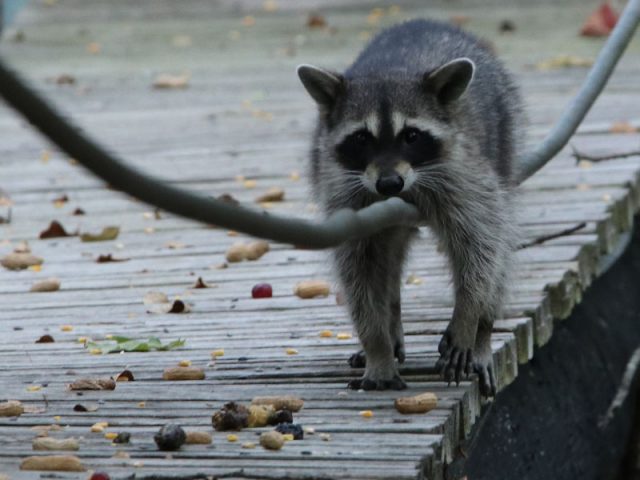

The two siblings, Indigo and Olive were next. These two had spent the most time in rehab, and consequently they were the most comfortable around people. These two foxes were much more relaxed in their crates—possible drawing confidence from each other. It was our hope that they would give us better opportunities for photographs upon their release, and they did not disappoint.
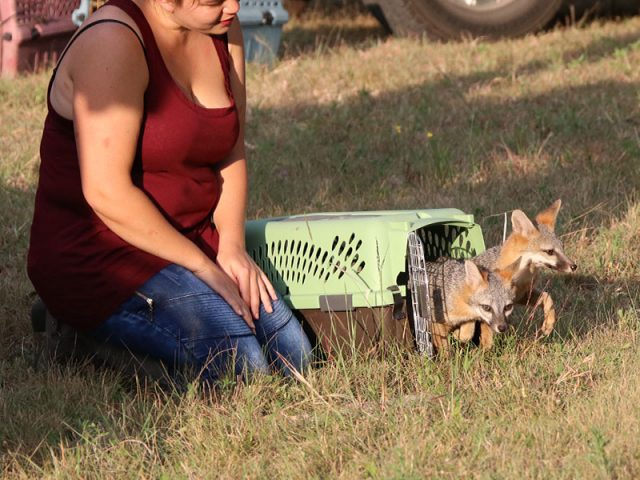
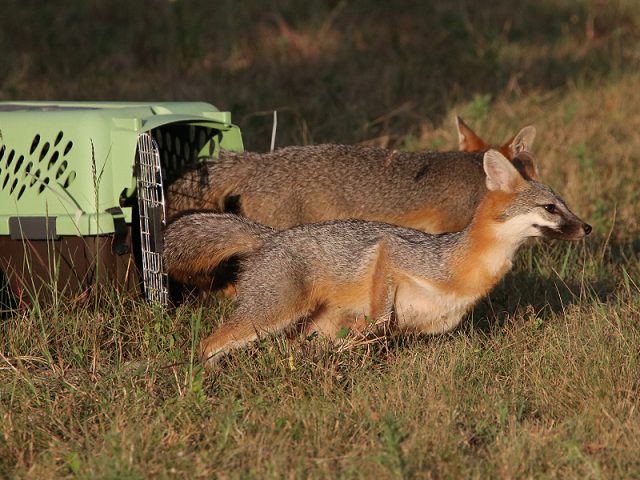
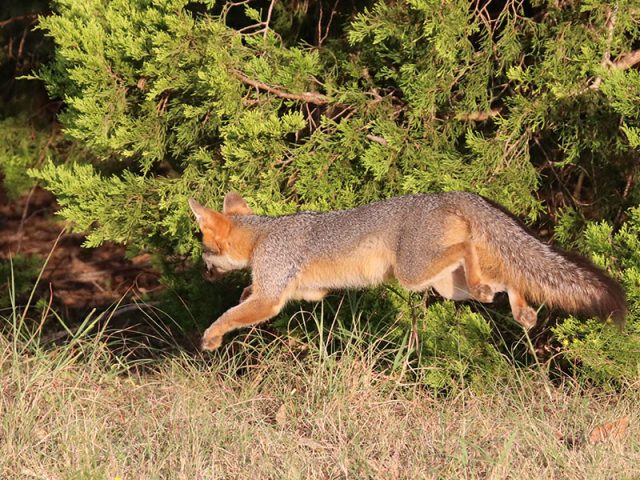
When the crate doors opened, these two foxes were joyful in their new found freedom. They spent much of the next two hours exploring and playing in their new home. We watched them come and go multiple times while we waited for night to fall. The Raccoons and foxes even investigated their surroundings together for a time.
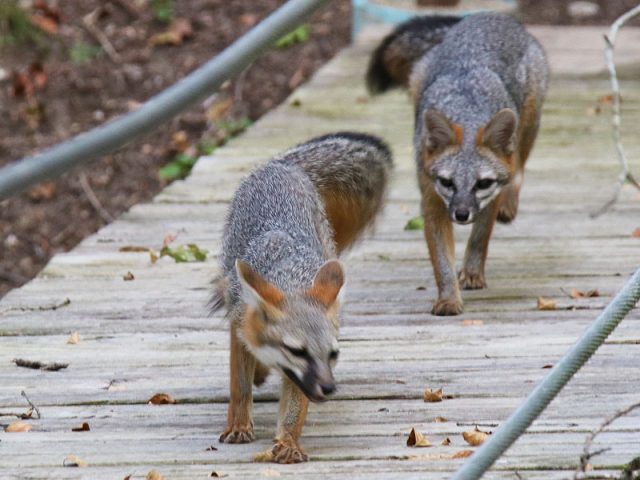
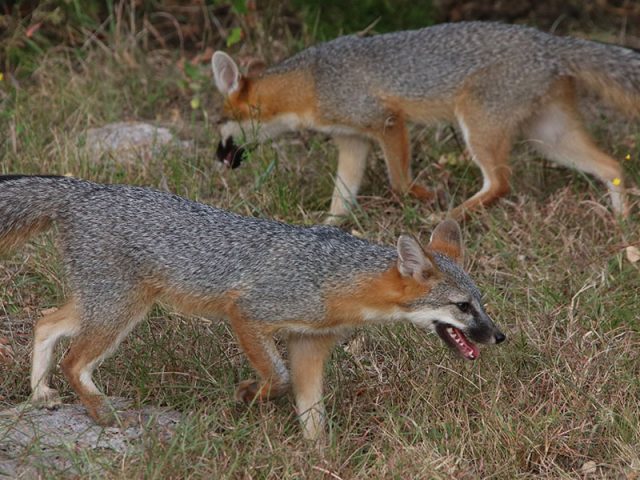
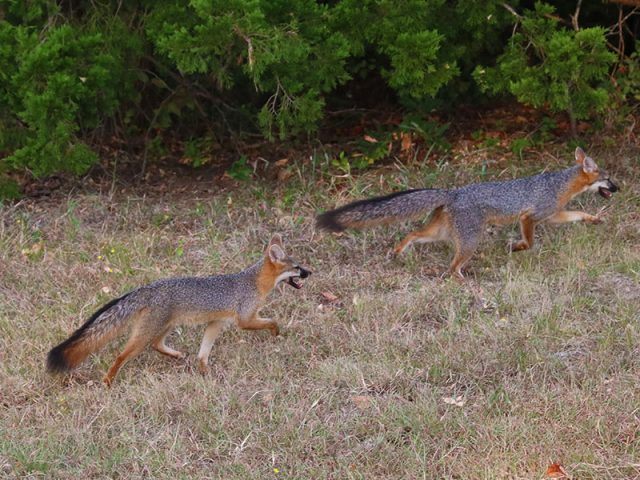

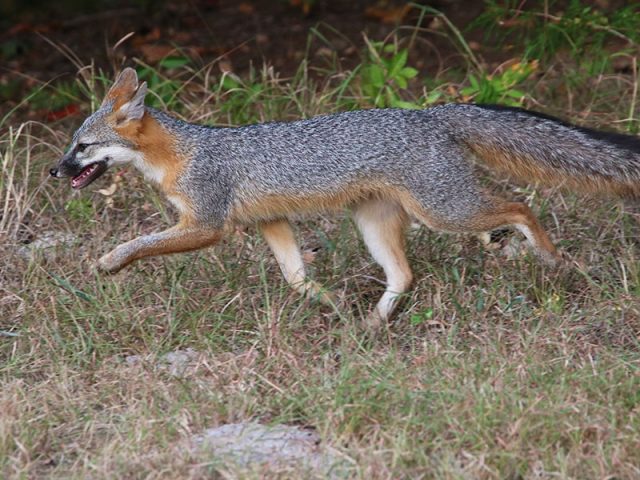

Even as the last light of the day was fading away, we were having a hard time calling it quits. The young foxes were thoroughly entertaining. They were experiencing pure joy, temporarily unconcerned of the challenges they would be facing living in the wild. But that is the purpose of youthful exuberance—it helps to give newly independent young animals the confidence they need to succeed.
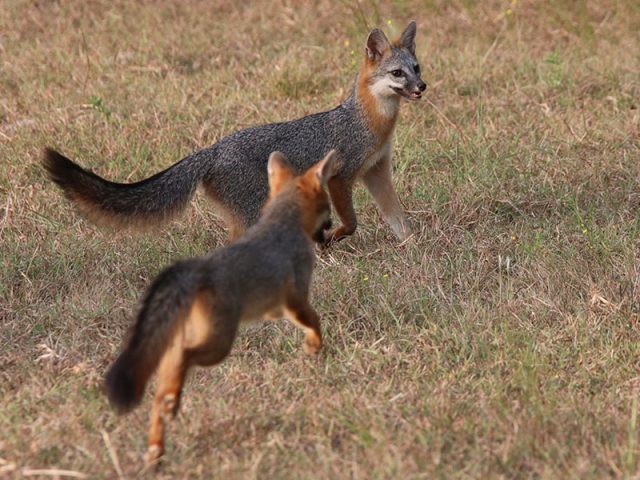
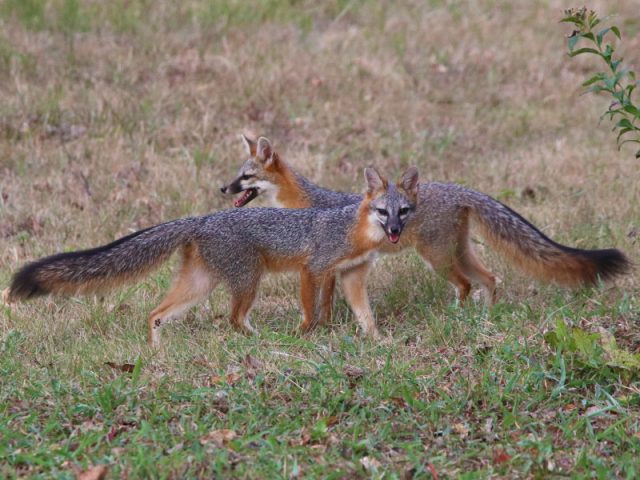
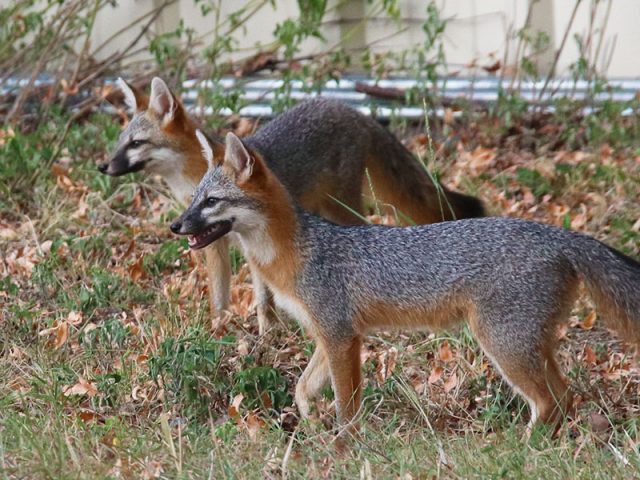

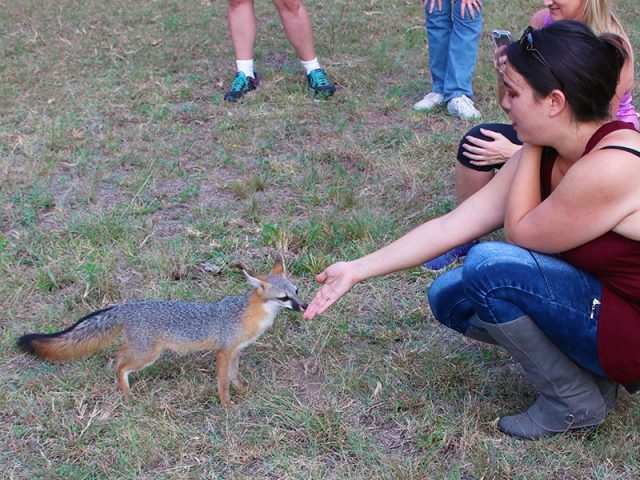
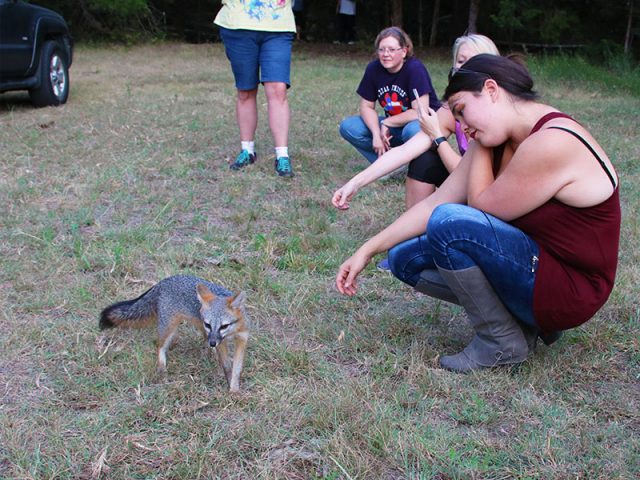
We headed for home that evening feeling really good about the fox’s prospects. I was eager to have a look at my pictures. I had taken over 2000 photographs—there would be a lot of images to sort through.
Meanwhile, the plan was to continue to monitor the health of the last two foxes, and to schedule a release date just as soon as they were ready.
That day finally arrived in early November. This time we would be heading out to Parker County west of Fort Worth. The terrain at this location was very similar to that of the ranch in Wise County. The Mali and Niri would do well here.
Once again our group met late in the day. Together we carried the foxes in their crates to a special location near a water source and prepared for the release. After a brief discussion about how best to position ourselves to maximize our opportunities for good photographs, it was time to turn them loose. The crate doors were opened and the two foxes bolted away almost before any pictures could be taken.
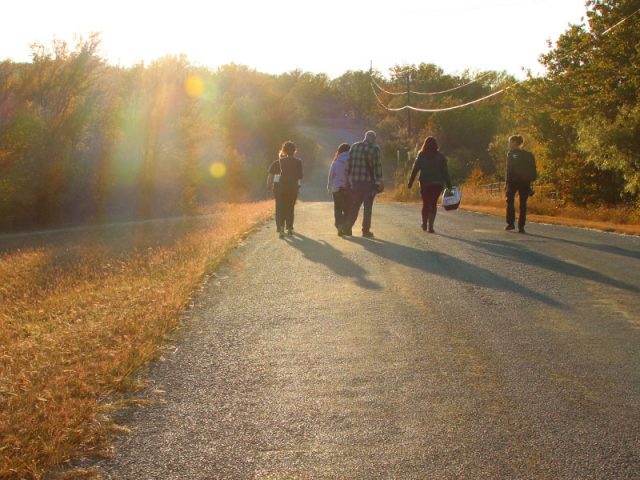
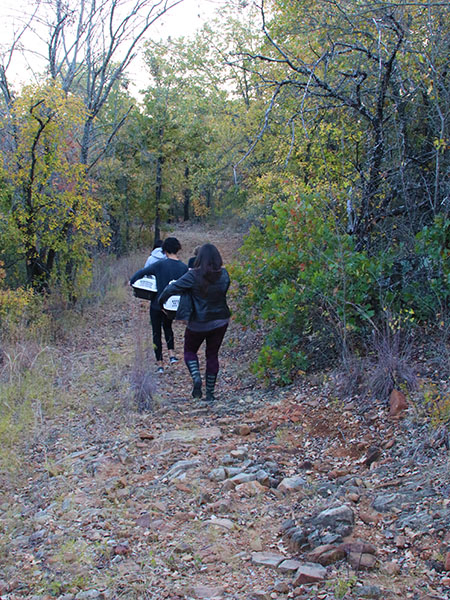
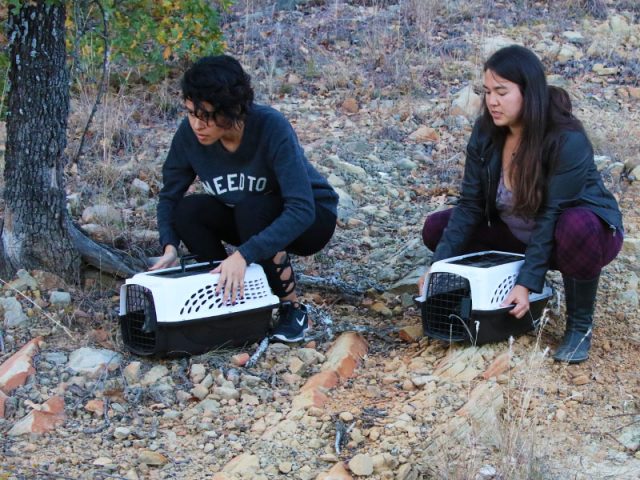
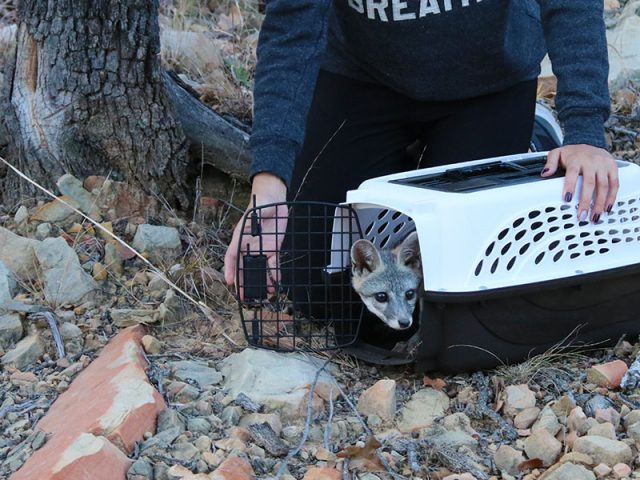
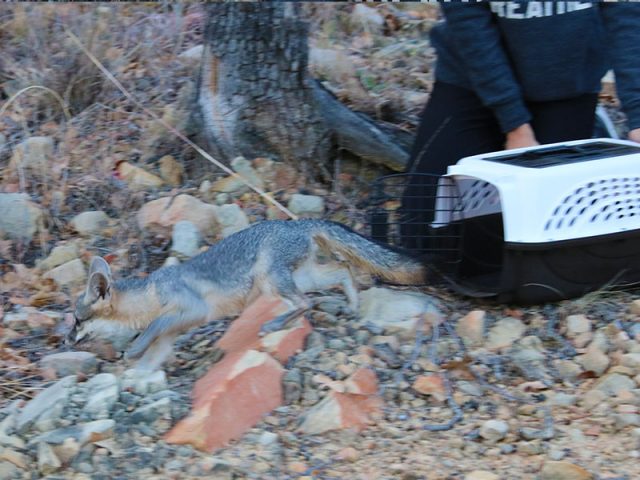
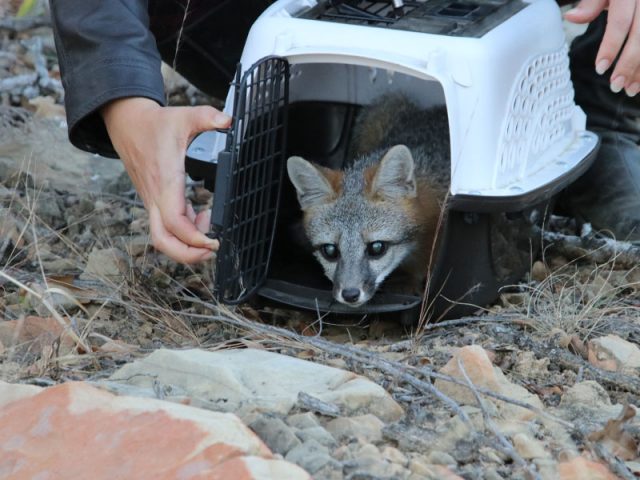
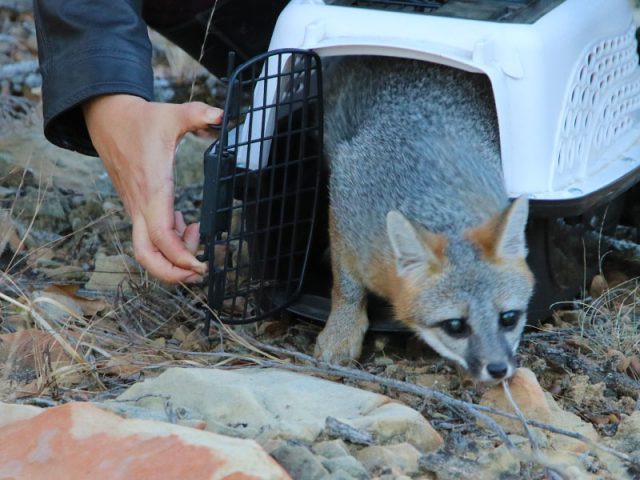
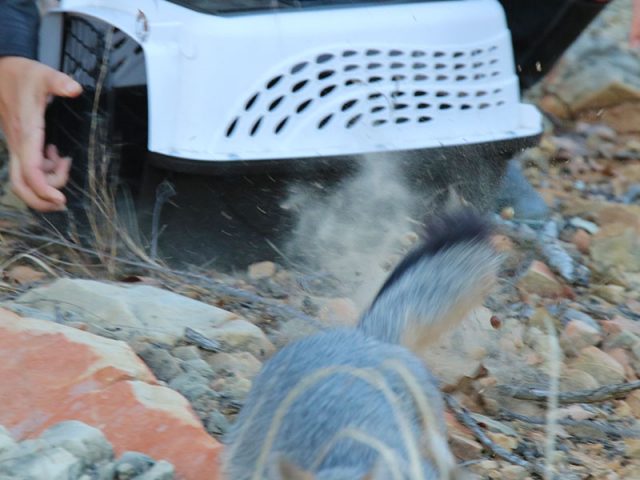
It was over as quickly as it had begun. The two healthy foxes were free. Free to explore and make their own way. There will certainly be challenges for these and the other foxes we released. Life in the wild is tough and there are no guarantees. But it only takes a momentarily look into the eyes of these animals to know how much they value their freedom. Making their way in the wild is what they are meant to do. It is their purpose. Thanks to the dedication and hard work of Kari and her friends, these foxes have been given a second chance to do just that.
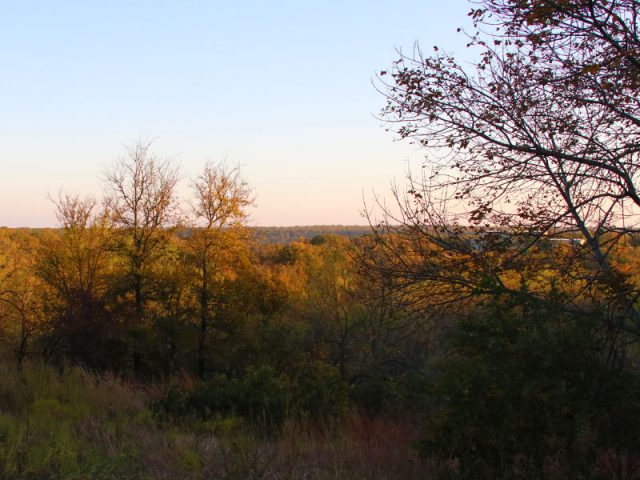



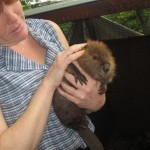
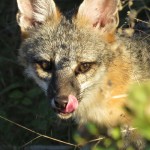



Great series!
So sad for Wolverine but so many happy endings when the other animals were set free. Thankful there are rehabbers to care for these animals until they can be let go in the wild. Wonderful photos to go with the story.
A gray fox has showed up in our yard. I feed neighbor cats and he has found the bowl and where I keep fresh water. Live in Johnson County and all of us have 1 to 4 acres of woods. Have seen him 3 times in last 4 months. Hope he stays around.
We have a gray fox living in our back yard now
Twice I have seen a gray fox near Baylor Hospital in Dallas. I was delighted to see it. I never expected to see a fox so close to downtown Dallas.
Our “Ring” doorbell picked up movement and recorded a small gray fox walk up to our front porch and then across the yard. What a busy tail! Location is Bedford, near Meadowpark Baseball fields.
We live in a culdesac and one comes in our back yard every night along with a mother and baby raccoon – meadowbrook
We have seen two red foxes a couple of times in our backyard (Wedgwood-Fort Worth). Today they were back along with two grey foxes (smaller than the reds). They were climbing one of our trees! Should we just leave them alone or what?
Yes, please enjoy having them in your yard. It is a privilege to get to see such things!
-Chris
This morning got up for glass of water when I heard something went to window to look outside I just saw a silver colored figure on my porch it was a silver fox I thought I was seeing things, pointed snout very slender with long hair almost fluffy long fluffy tail, I didn’t think they were in Azle, so sweet looking, I know what Raccoon looks like it was not that, not a cat and not ugly as coyote, it was beautiful and dainty.
Two adults and two kits are living under my neighbors deck (which was previously occupied by possums). I saw a large grey fox last night and am a little concerned for my two very small dogs. I will stay close when they are outside. Is the anything I should be doing?
The foxes aren’t likely to bother your pups, but keeping an extra close eye on very small dogs when they are outside is a good idea all the time. There are numerous potential dangers to unsupervised small pets. Though incidents are rare, staying with your pets and staying close is prudent when they are out of doors.
-Chris
We just saw a fox at the back of our 4 acres by Pecan Creek in Decatur, Wise county. Wonder if it was one of the released kits?? We’ve been here 12 years and never seen a fox before.
Have a little fox comes up a eat cat food at my front door got a video from my ring
Have the dog, vixen and 3 kits living under an old 10*12 shed in the back yard (.5ac). At first it seemed only 1 kit but a few days later a 2nd one was spotted. This week a 3rd kit now frolics with other two when they are out. The 3rd one seems noticeably smaller then the 1st two. Is this “normal”?
Skip – Hutto, TX